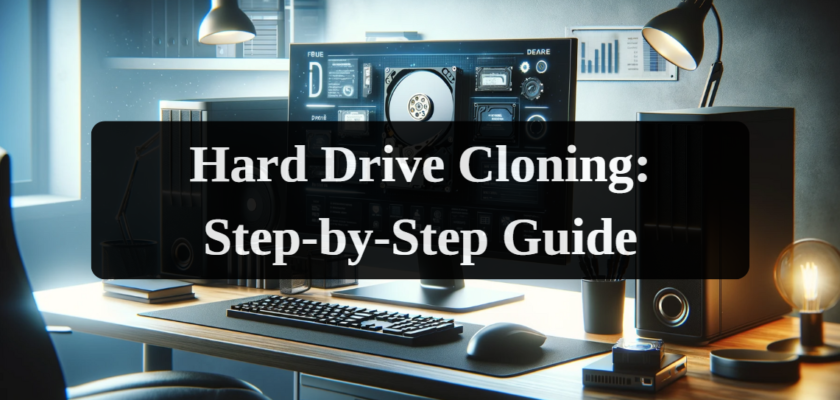Cloning a hard drive is a process that creates an exact replica of one drive’s contents onto another. This technique is useful for upgrading to a larger or faster drive, creating a backup of critical data, or migrating a system to new hardware without reinstalling the operating system and applications.
Hard drive cloning replicates not just files and folders but also the data’s precise arrangement and structure, including the operating system, applications, settings, and boot sector. This complete duplication ensures the new drive mirrors the original, allowing it to boot and run as the original did.
There are multiple ways to clone a hard drive, each catering to different levels of technical expertise and specific requirements. Users can opt for built-in Windows utilities, which offer a straightforward solution, or various third-party software tools with user-friendly interfaces.
This article explores different methods for cloning a hard drive, guiding you through the process using built-in Windows tools and third-party software. By understanding each approach, you can choose the method that suits your technical comfort level and cloning needs.
Remember, while cloning is reliable, it’s always good to back up important files separately to avoid data loss in case of errors or drive failures.
Cloning Hard Drive Using Built-in Windows Utilities
Windows built-in tools provide a straightforward solution for cloning hard drives. This section guides you through using these utilities to clone a hard drive.
Overview
Windows includes the Backup and Restore tool, which creates a system image—a sector-by-sector copy of the drive. This image can restore the system to a new hard drive.
Step-by-Step Guide
Preparing for Cloning:
- Ensure the target drive (SSD or new hard drive) is connected to your PC.
- Make sure the target drive has sufficient space for the system image.
Creating a System Image Backup:
- Open the Control Panel and navigate to “Backup and Restore”.
- Click on “Create a system image”.
- Choose where to save the image.
- Follow the prompts to select the drives for the backup and start the process.
Restoring from the System Image:
- To restore, boot the PC using Windows installation media or a recovery drive.
- Navigate to “Troubleshoot” -> “Advanced Options” -> “System Image Recovery”.
- Connect the drive with the system image and follow the prompts to restore it onto the new hard drive.
Cloning with Third-Party Software
Third-party software offers a flexible and feature-rich experience for cloning hard drives. These tools cater to various needs, from simple disk duplication to complex backup and restoration scenarios.
Choosing the Right Software
Consider ease of use, hardware compatibility, and specific features when selecting third-party cloning software. Popular options include MiniTool Partition Wizard, Clonezilla, Macrium Reflect, and EaseUS Todo Backup.
General Cloning Process
The process typically involves:
- Installation: Download and install the chosen software.
- Preparation: Connect the SSD or target hard drive to your computer.
- Initialization: Launch the software and select the cloning feature. Choose your source and destination drives.
- Configuration: Set options like resizing partitions or selecting specific files for cloning.
- Cloning Process: Start the cloning, which depends on drive size and speed.
- Completion: Once done, the software notifies you. You can then boot from the new drive or use it as a backup.
Considerations and Tips
- Backup important data before cloning.
- Look for SSD optimization features if cloning to an SSD.
- Trial versions help evaluate the software before purchase.
- Choose software with good support and tutorials.
Section 4: After Cloning
Post-cloning, ensure your new drive functions correctly and efficiently.
Booting from the New Drive
1. BIOS/UEFI Configuration:
- Restart your computer and enter the BIOS/UEFI setup.
- Set your new drive as the primary boot device.
- Save changes and exit.
2. First Boot Check: Ensure the system boots up as usual.
System Checks and Optimization
1. Data Verification: Verify all files, applications, and settings are correctly cloned.
2. Drive Optimization: If cloned to an SSD, enable features like TRIM.
3. Updating System Drivers: Check for driver updates.
Final Considerations
- Keep the original drive as a backup.
- Some programs may require re-activation.
- Clean up old backups or temporary files from your new drive.
Conclusion
Cloning a hard drive is valuable for system upgrades, backups, or transitions to new hardware. By following the steps outlined, users can choose the cloning method that best fits their needs. With the right tools and knowledge, you can confidently manage the process and achieve successful results.

